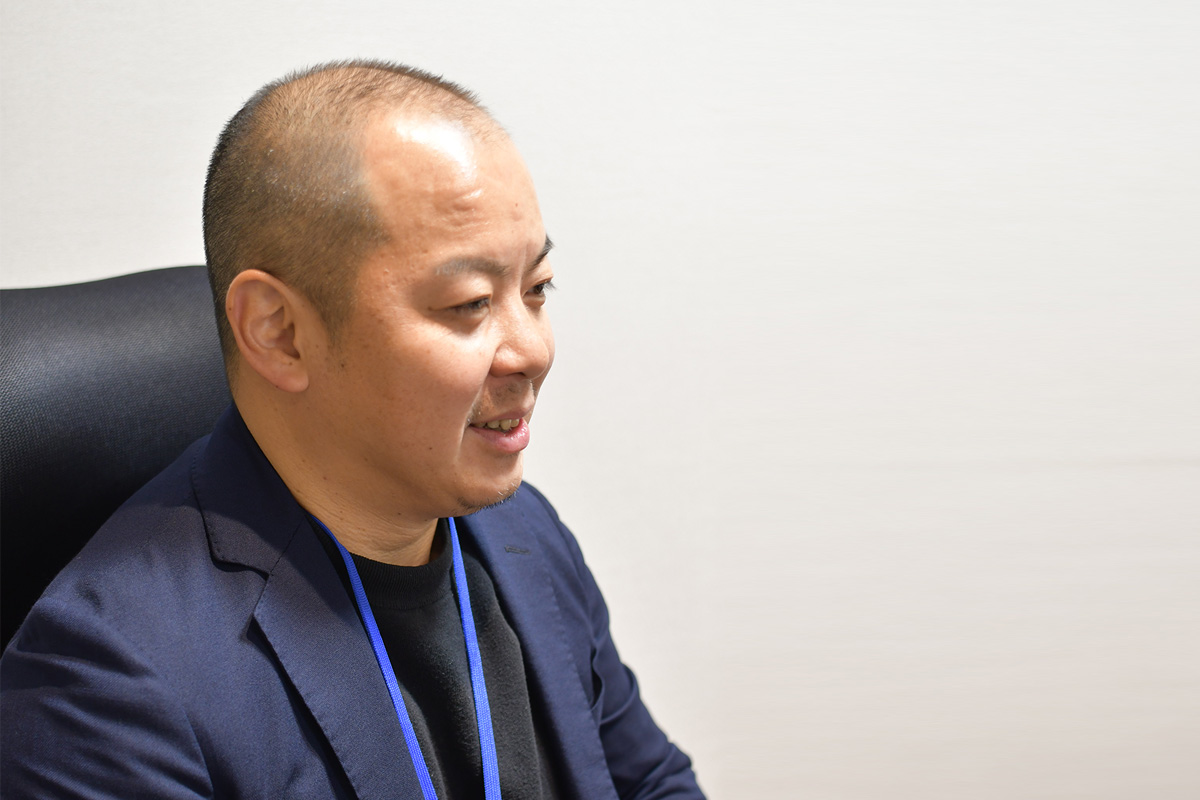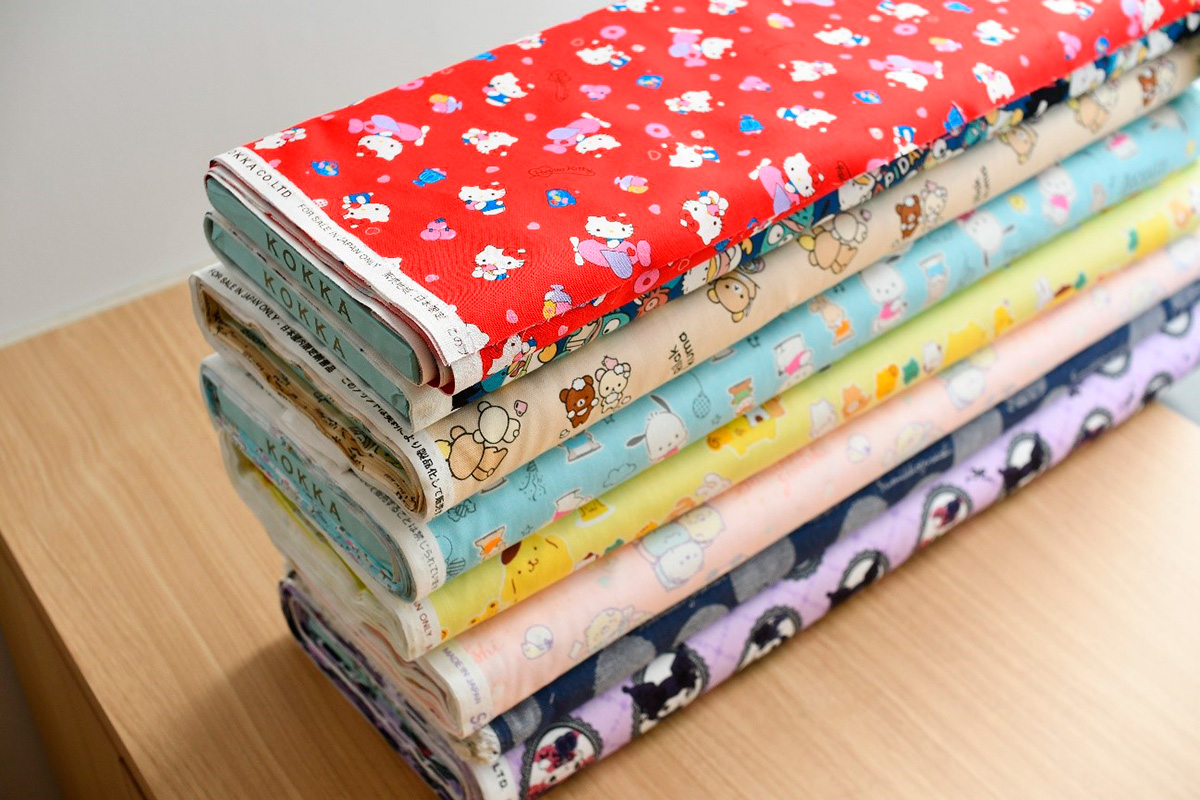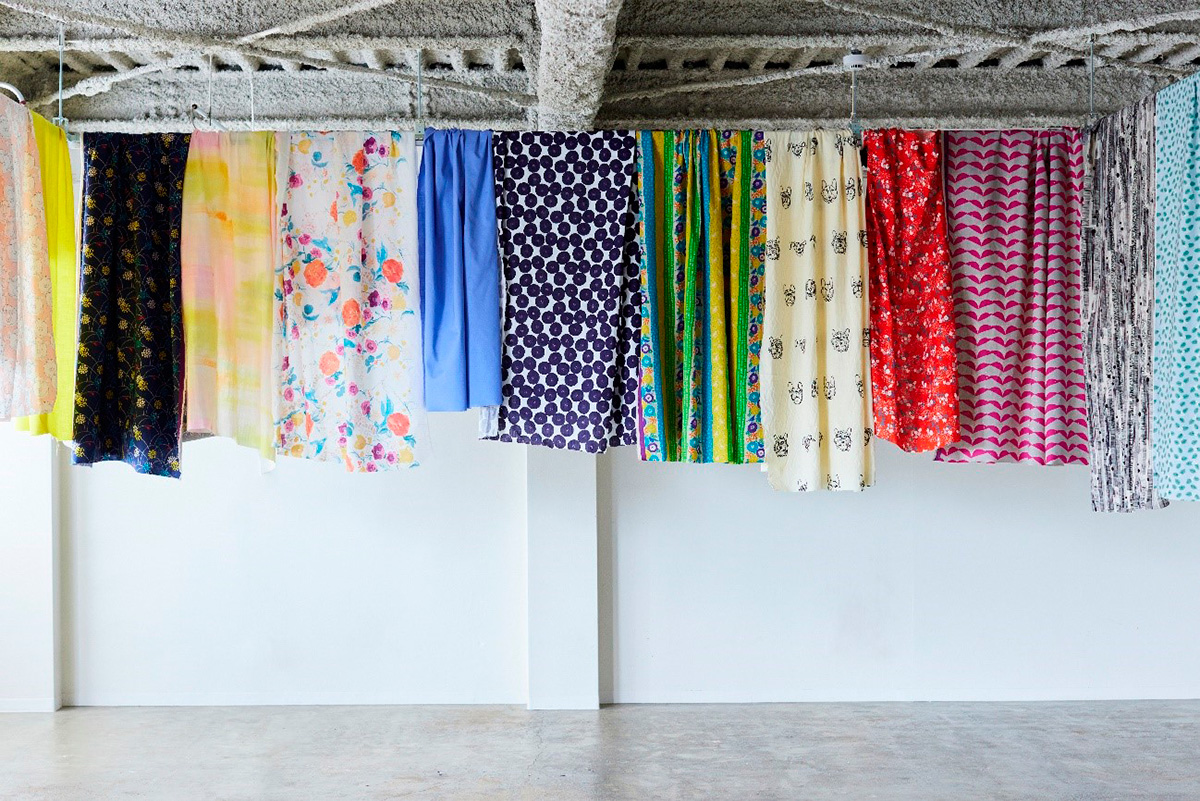In this exclusive interview with The Worldfolio, Mr. Hiroyuki Okada, President of Kokka Co., Ltd., shares insights into the success and challenges of the Japanese textile industry. Focused on quality and craftsmanship, Okada discusses Kokka's commitment to delivering high-quality products rooted in the unique Japanese concept of "monozukuri." He addresses the impact of Japan's demographic shift on manufacturing, explores strategies for international expansion, and reflects on the company's future goals. From adapting to e-commerce trends amid COVID-19 to potential growth in India, Okada provides a comprehensive perspective on Kokka's journey and future aspirations in the ever-evolving global market.

Over the last 25 to 30 years, Japan has seen the rise of regional manufacturing competitors from countries like Korea, China, and Taiwan, who have replicated the Japanese model of success, pushing Japan out of certain markets. However, many Japanese B2B or B2C textile brands, such as Uniqlo or Yagi Tshusho, have seen success in overseas markets. What are the advantages of Japanese textile brands today, and what added value do they bring to their customers?
Quality is the cornerstone for Japanese textile companies, such as Uniqlo and Yagi Tsusho, as well as our own, in achieving traction and success in international markets. Renowned for their unwavering commitment to quality, precision, and meticulous attention to detail, these companies have established themselves as leaders in the industry.
One aspect of Japanese quality is monozukuri - the idea of reaching perfection in industrial fields or textiles. How are you able to achieve high-quality products in Kokka?
Creating added value becomes crucial in the production flowchart, especially since we don't handle every aspect internally. We source threads and other raw materials from foreign countries. Unlike companies like Spiber, which utilize their own brewed protein materials, our emphasis needs to be on adding value by introducing printed fabric sewn in Japan. This approach allows us to deliver high-quality products rooted in craftsmanship, innovation, and technology unique to Japan.
There is a significant gap between Japanese printing technologies and the numerous dyeing factories in China and other countries. 95% of our final products for both domestic and international customers are domestically sewn and printed. This kind of intermediary product heavily relies on our originality. Hence, we highly value cooperating with artists, character creators, and companies.
Shaping and printing the products properly within the factory are key aspects of achieving the demanded high-quality outcome. This meticulous process mirrors the standards of Japanese manufacturing companies, which we heavily depend on.
Considering the added value, our products may be slightly more expensive than those of affiliated companies outside Japan, but the emphasis is on quality. This not only reflects the commitment and craftsmanship inherent in Japanese production but also complements the overall development of our products.
Due to Japan being the oldest society in the world with a rapidly shrinking population, maintaining this craftsmanship will be somewhat difficult. With this demographic shift, a smaller pool of younger graduates is coming through for companies to replace their older, more senior workers, and the domestic market is shrinking. What challenges has Japan’s current demographic situation presented to your firm, and how have you been reacting to it?
Japan’s demographic shift, particularly the plunge in the overall population and factory workers, poses a serious challenge not only for our firm but also for many manufacturing companies. The diminishing birth rate directly translates to fewer children, lowering the production focused on characters. There’s not much we can do about that. Unfortunately, our reliance on character-related products makes us particularly vulnerable to this trend, as a decrease in Japan's population results in the reduction of characters, merchandise, and overall product demand.
The quality and craftsmanship synonymous with Japanese factories are not achieved overnight but through a continuous process of fostering human capital, ensuring a seamless transition of skills to the next generations. As a fabless company, we don't operate our factories; instead, we rely on the manufacturing capabilities of dyeing factories or sewing companies through commissioned work.
These factories are grappling with a shrinking labor force and are actively working on transferring manufacturing techniques to the younger generation of workers. Despite these efforts, the overall situation paints a less optimistic picture. Japan's economy has faced stagnation for many years, if not several decades. The current scenario poses more problematic challenges than business opportunities.
Can you tell us more about the advantages of such a business model of outsourcing manufacturing to a third-party factory brings to your business? Are you looking to find or work with factories in overseas markets to mitigate Japan’s demographic circumstances?
Anticipating the prolonged impact of Japan's demographic challenges on our business, we proactively adapted by exploring potential solutions. Given the persistent social issue surrounding the declining population, we began considering collaboration with foreign factories to overcome the demographic situation in Japan. Currently, we are in the process of identifying suitable factories for potential cooperation to replicate our existing business model.
Despite our efforts, achieving the same level of quality as in Japan remains a challenge. Many major players in the dyeing industry have embraced inkjet printing, investing significantly in initial equipment installation. However, inkjet printing has its limitations. While it offers a range of colors and patterns, it falls short in creating deep colors. While it can produce blackish or pale black outputs, it falls short of the deep colors achievable by Japanese dyeing technology. Nevertheless, the advantage lies in not requiring additional human resources for in-house product shaping, a process we traditionally handle.
The positive aspect is that the inkjet industry is evolving with the introduction of new features and functions. Although there are weaknesses, such as perfect alignment and surface treatment of the final product, it is becoming a preferred direction for many companies.
Considering Japan's aging and declining population, we are exploring outsourcing options for our dyeing capabilities. Potential destinations include Korea, China, and Indonesia.
What strategies are you employing to ensure the success of your varying brands of businesses?
Our brand strategy is a fundamental aspect of our business, particularly as the leading player in the character fabrics segment in Japan. Our focus lies in creating fabrics based on characters from anime, books, or light novels like manga.
Despite this limitation, we aspire to expand into international markets in the future, given the global popularity of Japanese content like manga and anime. However, the intricacies of brand strategy make it challenging to predict which character will become a hit product. It could be seasonal, and while projections can be developed to some extent, it won’t guarantee widespread monetization. Nevertheless, we are optimistic that our strategy will yield positive results.
In addition to character fabrics, we excel in other categories, such as towels, bags, aprons, and kitchen-related products. We are actively working on formulating a comprehensive strategy for our future sales. Our online store, on our original site, serves as a platform for selling our products, complemented by distribution networks in the US and a presence in Shanghai, China. We anticipate these locations as pivotal for our next strategic sales increase, employing brick-and-mortar and online sales approaches.

Our character fabric products
When you eventually take your character fabrics overseas, are you looking to partner with local firms to understand these newer markets? Do you plan to work with distributors or a local firm to help market yourself to these new regions?
Adapting our marketing approach is essential as we aim to identify the characters suitable for specific markets. We need to carefully evaluate new markets because of variations in marketing dynamics, customer needs across different countries, and cultural differences.
A critical aspect involves comparing the average household expenditures in each country with Japan, with the United States often serving as our benchmark due to our prior experiences in Europe and the US. However, we learned that a one-size-fits-all approach doesn't work well. Our expansion attempts in those locations didn't work out well because we didn't select the correct marketing strategy.
For instance, in Japan, parents may readily spend JPY 1,500 for their child to purchase character fabrics or related goods. Conversely, this might be perceived as too high in the United States, where a wide array of characters, ranging from child-centric Disney characters to Marvel characters for young adults, impacts market dynamics. The abundance of characters contributes to lower retail prices, and we can’t simply say that our products are more expensive because they are made in Japan. It simply doesn't work that way.
Whenever we venture into a new market, whether it be the US, Europe, or any other country, we need to do a thorough analysis of customer needs, price zones, and the types of products viable for introduction at affordable prices.
These considerations will shape our overall marketing strategy shortly. If we pursue that, we must take very careful steps and employ well-thought-out marketing methods.
What is your favorite character fabric?
While I don't frequently use character fabrics, I enjoy reading manga and watching anime. The widespread appreciation for Japanese manga, anime, and animated series is evident, with numerous loyal fans accessing their favorite characters on platforms like Netflix, Amazon Prime, YouTube, and others.
It’s a different type of entertainment for us. However, there's a difference between merely enjoying the content and producing products based on these characters. Understanding what our audience wants is essential, but it is equally important to approach them with the right product pricing based on each character. This aspect is fundamental and needs careful consideration as we shape our marketing strategy.
Due to COVID-19, physical retail stores struggled because of the changes in lifestyles, like staying at home and social distancing orders. As a result, we saw online sales jump by 13%, and Japan became the fourth-largest e-commerce market in the world in 2021. Can you go into more detail about how your business has been able to adapt and take advantage of this growth in e-commerce?
It continues to positively impact our yearly sales. We have a B2C business domestically and in the US. The pandemic, which confined people to their homes and limited their ability to visit physical stores, led to a significant surge in online shopping. Our online stores played a key role in this shift, resulting in increased sales and favorable business outcomes during these challenging times.
Kokka participated in the Quilt Market Exhibition held in Houston, Texas in October this year. Moreover, you exhibited at Premiere Vision in Paris earlier this year, which was the first time you were able to exhibit in three years. Are you planning to participate in more international events going forward, and what do you plan to showcase?
After the pandemic disrupted these activities, we aim to resume our participation in international events, such as the Quilt Market Exhibition and Premiere Vision in Paris. However, the decision will hinge on the return on investment (ROI), especially given the current cost considerations. The exchange rate of the US dollar against the Japanese yen poses a significant factor, making travel to the US comparatively more expensive than a decade ago.
The costs involved, including participation fees and travel and accommodation expenses, compel us to carefully weigh the expected outcomes for each event we consider. Despite our desire to engage in more international events, prudent consideration of expenditures and potential outcomes is vital.
Interestingly, the profitability of our online net sales during the pandemic revealed that, in some aspects, online channels outperform traditional expos. Expos now seem somewhat old-fashioned, requiring customers to visit physical stores to experience fabrics firsthand. Conversely, online stores offer a faster means of reaching regular and repeat customers.
Our e-commerce channel allows clients to access YouTube and SNS introductions of our new product lineup. The pandemic has prompted a shift in marketing methods, making us realize that we may not even have to go to the expos. Leveraging these new online methods allows us to explore what works best for our business.
Going forward, which country or region holds the most potential for growth as part of your firm’s international strategy?
India has caught our interest due to its growing population, and we are contemplating the message we wish to convey through our products. As a company, our philosophy centers around delivering excitement and uniqueness through our products—a sentiment echoed in comments from our existing markets in China and America. This is particularly relevant as our products are based on unique characters.
For our next phase of international expansion, we plan to enhance our sales in existing markets, particularly the US and China. With its economic appeal and local interest in Japanese culture, the US presents an attractive opportunity. Conversely, China has various restrictions, making a full-scale investment in a single region riskier.
Given these considerations, India emerges as a potential option, as we currently do not have an exporter there yet. The idea is to evaluate how much value we can deliver and what unique Japanese characters or quality-based products we can introduce to the Indian audience. If successful, India could become our next destination, providing a strategic avenue for our company's growth.

Our fabric products are designed by artists
Suppose we come back in 2028 on your 80th anniversary. What are some of the goals that you, as the president, want to achieve?
I envision Kokka evolving into an even more interesting company. Our corporate philosophy highly values sensibility, sensation, and a sense of gratitude. At the heart of our approach is the belief that the originality of each person knows no bounds and that the power of thought transcends specific targets. It’s difficult to answer your question because our company thrives on originality and interesting products, often stemming from the unique visions of our employees and everyone involved.
Kokka boasts a diverse range of offerings, including character products, original creations, and collaborations with both Japanese and American designers known for their exceptional creativity. Their power of thought is limitless, allowing them to explore the unimaginable, with the sky as the limit for their ideas.
As we chart our course forward, the core of our company's next steps will be based on our original power of thought—a driving force that has propelled us for the past 76 years. Looking ahead, we are committed to continuing to shape our products and services based on these innovative thoughts and ideas for the benefit of our customers.
I aspire to witness our company garner even more interest, becoming more well-known for original products and ideas than before.
0 COMMENTS